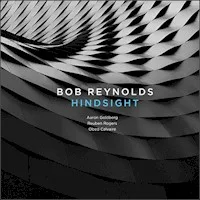Styles: Guitar Jazz
Year: 2002
File: MP3@320K/s
Time: 70:28
Size: 161,9 MB
Art: Front
(4:20) 1. JC Is The Man (Part 1)
(8:37) 2. Vodville
(5:49) 3. Stevie In Rio
(9:52) 4. Mr. JJ
(6:06) 5. Side B
(8:16) 6. Kiss
(5:07) 7. JC Is The Man (Part 2 )
(5:31) 8. Laughin' & Talkin' (with Higg)
(8:05) 9. Tonality Of Atonement
(8:42) 10. ...Like The Rose
Year: 2002
File: MP3@320K/s
Time: 70:28
Size: 161,9 MB
Art: Front
(4:20) 1. JC Is The Man (Part 1)
(8:37) 2. Vodville
(5:49) 3. Stevie In Rio
(9:52) 4. Mr. JJ
(6:06) 5. Side B
(8:16) 6. Kiss
(5:07) 7. JC Is The Man (Part 2 )
(5:31) 8. Laughin' & Talkin' (with Higg)
(8:05) 9. Tonality Of Atonement
(8:42) 10. ...Like The Rose
Now here’s a guy (and a group) that can play: Jeff “Tain” Watts, who is quite simply one hell of a drummer, is an artist growing in popularity but building impressive skill and power after having served as a supporting player for the likes of such prominent jazz masters as pianist McCoy Tyner and guitarist George Benson. In the terrific Bar Talk , working with Ravi Coltrane (tenor), David Budway (piano), James Genus (bass), Paul Bollenback (guitar) and Gregoire Maret (harmonica), Watts creates music that forgets to play it safe and the listeners are the beneficiaries. Adding to this pedigree are awesomely performing guest stars: Branford Marsalis, Micahel Brecker, Hiram Bullock, Robert Thomas, Jr., and Joey Calderazzo. Wow.
Watts and his group play not simply with vibrancy, but employ a virtuoso command of music that allows them to try new things, and do so with coherency and sheer command. In the constant varying of tempo changes and improvisational bravado alone, they deliver on the broken promises of their contemporaries in sustaining their invention all throughout rather than sparringly. There’s the kind of marvelously sloppy, anything-goes dexterity akin to Wayne Shorter in opening number “JC is The Man” (which JC Coltrane or the man upstairs are they referring to, one wonders), which is smoothly contrasted as soon as the third cut, “Stevie In Rio” (a Stevie Wonder tribute), which pays particular attention to Maret’s terrific use of harmonica and the quietly yet wonderfully lush guitar backbone provided by Bollenback. Budway’s very assured piano playing provides winning touches, and all throughout, Watts’ drumming unquestionably is the guiding force. That’s just one track, but you’ll find such attention to detail, clarity and invention in anything these boys play.
Watts and his group play not simply with vibrancy, but employ a virtuoso command of music that allows them to try new things, and do so with coherency and sheer command. In the constant varying of tempo changes and improvisational bravado alone, they deliver on the broken promises of their contemporaries in sustaining their invention all throughout rather than sparringly. There’s the kind of marvelously sloppy, anything-goes dexterity akin to Wayne Shorter in opening number “JC is The Man” (which JC Coltrane or the man upstairs are they referring to, one wonders), which is smoothly contrasted as soon as the third cut, “Stevie In Rio” (a Stevie Wonder tribute), which pays particular attention to Maret’s terrific use of harmonica and the quietly yet wonderfully lush guitar backbone provided by Bollenback. Budway’s very assured piano playing provides winning touches, and all throughout, Watts’ drumming unquestionably is the guiding force. That’s just one track, but you’ll find such attention to detail, clarity and invention in anything these boys play.
Together as a team or separate as soloists, this crew is as about as promising and passionate as they come nowadays. Several tracks refreshingly break the five-minute mark (hey, regular pop rock rarely breaks the three minute barrier), and each cut manages to dip into some kind of jazz flavor, from the bluesy aura of “Side B,” to the genuine virtuosity of “Mr. JJ,” in which Ravi Coltrane’s saxophone is the highlight, conjuring up a passion and proficiency eerily similar to his father, all-time-great John Coltrane. Higher praise is not necessary. Helpful readers have informed the critic that "JC" refers to James Carter. ~ Paul West https://www.allaboutjazz.com/bar-talk-jeff-tain-watts-columbia-records-review-by-paul-west.php
Personnel: Jeff "Tain" Watts (guitar) Ravi Coltrane (tenor) David Budway (piano) James Genus (bass) Paul Bollenback (guitar) Gregoire Maret (harmonica)
Personnel: Jeff "Tain" Watts (guitar) Ravi Coltrane (tenor) David Budway (piano) James Genus (bass) Paul Bollenback (guitar) Gregoire Maret (harmonica)
Bar Talk





















